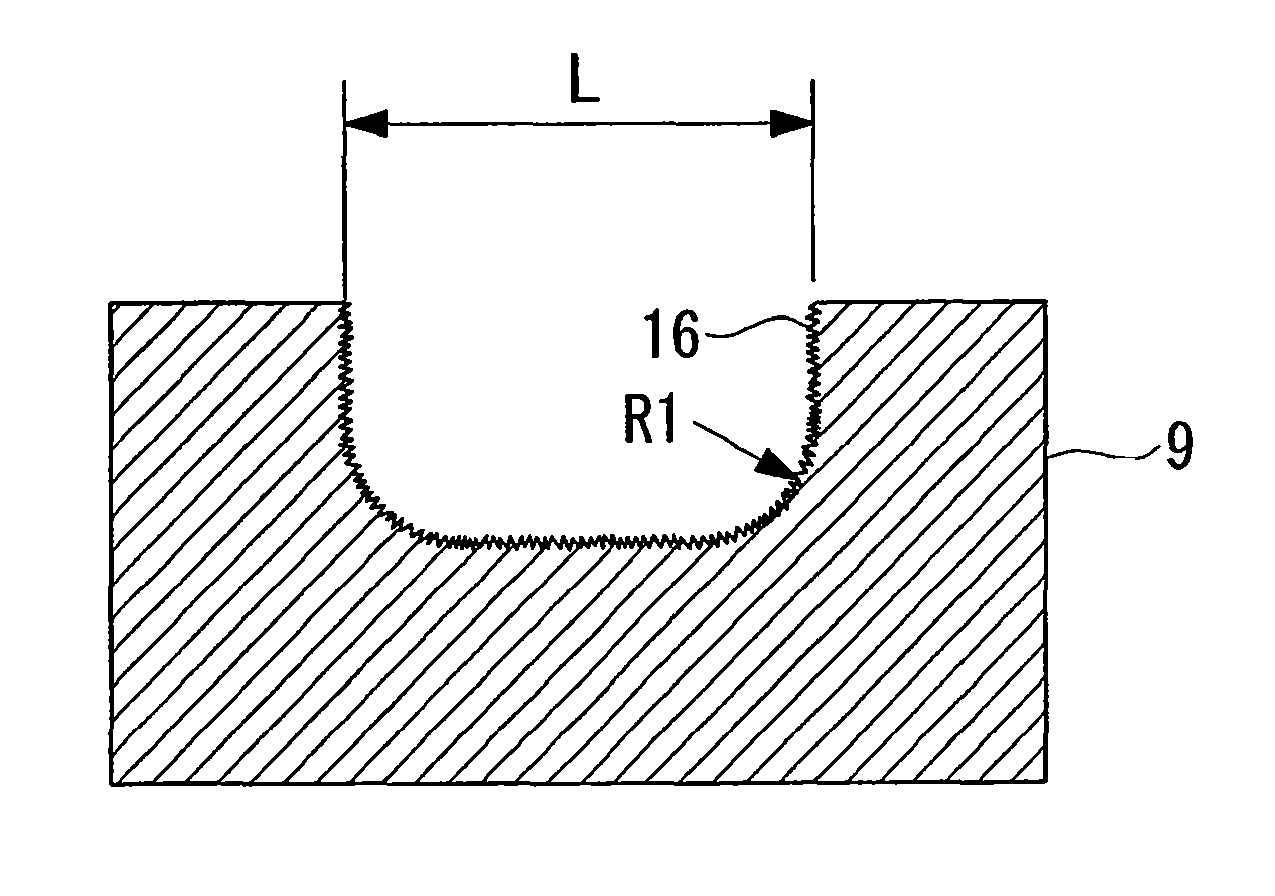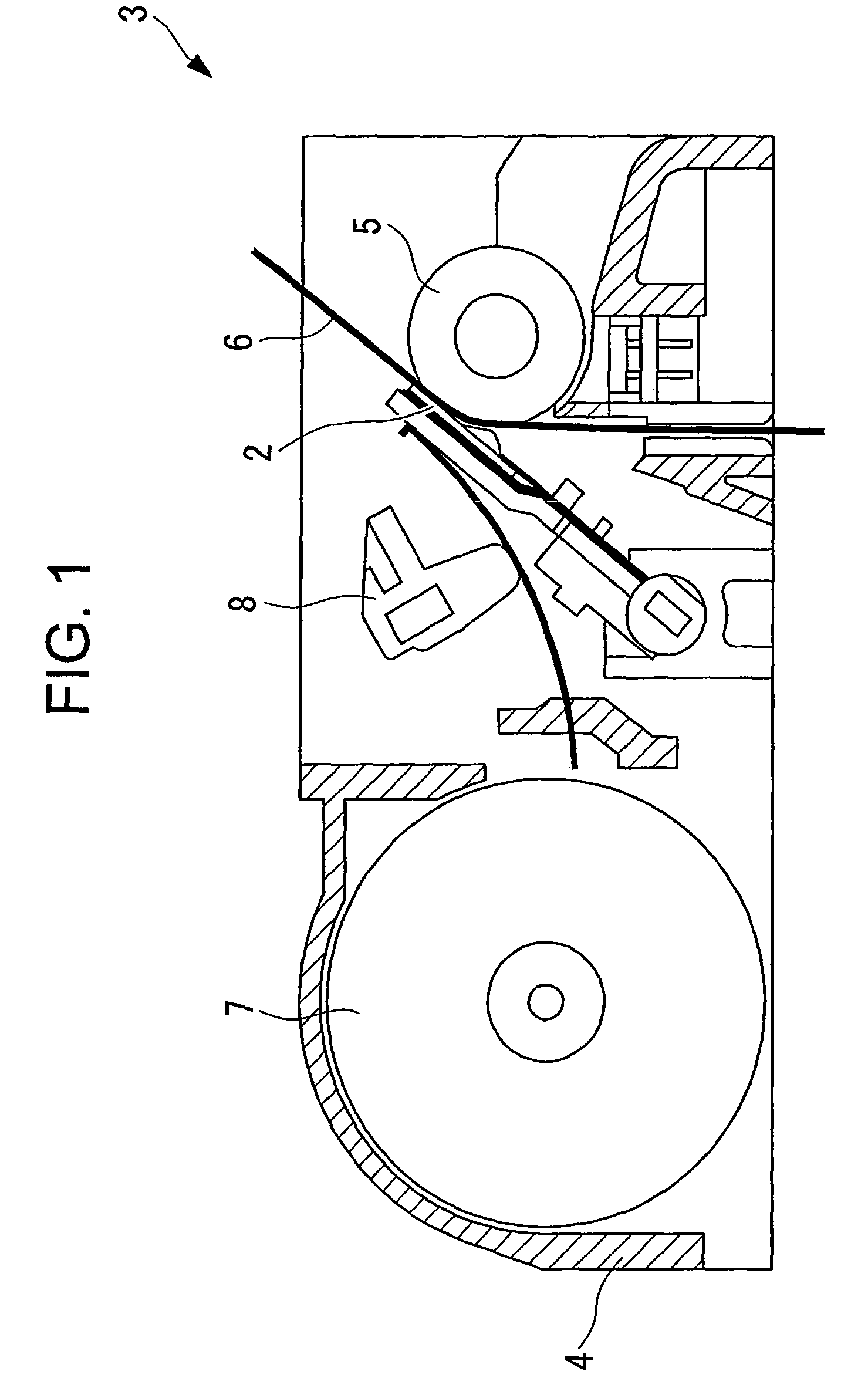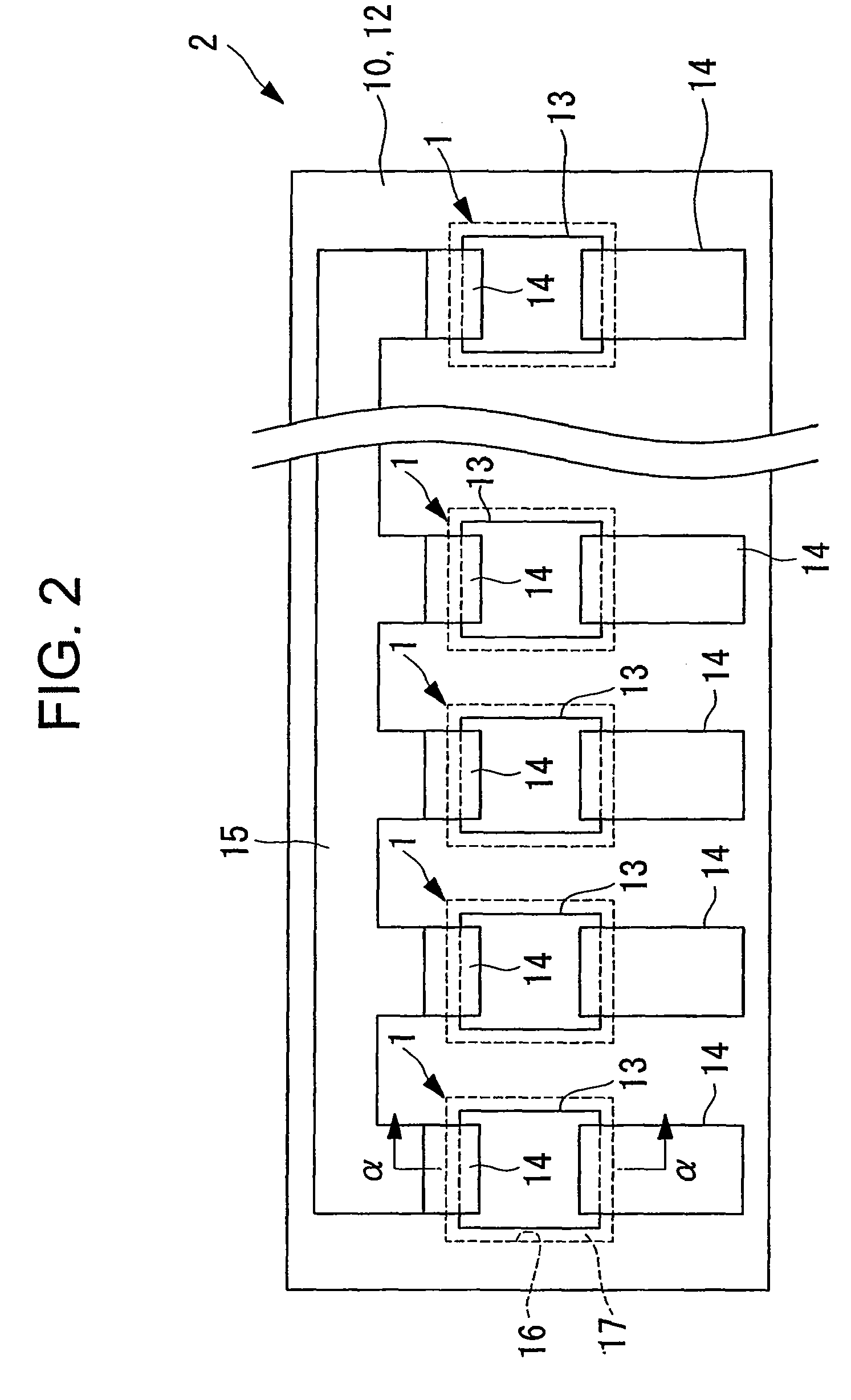Heating resistor element, manufacturing method for the same, thermal head, and printer
a manufacturing method and resistor technology, applied in the field of heat dissipation resistor elements, can solve the problems of difficult to let out heat from the hollow portion to the insulating substrate side, and difficult to manufacture or handle thin plate glass having a thickness of 100 m, etc., to achieve easy manufacturing, promote more active heat dissipation, and facilitate formation
- Summary
- Abstract
- Description
- Claims
- Application Information
AI Technical Summary
Benefits of technology
Problems solved by technology
Method used
Image
Examples
Embodiment Construction
[0044]Hereinafter, a heating resistor element 1, a manufacturing method for the same, a thermal head 2, and a thermal printer (printer) 3 according to an embodiment of the present invention are described with reference to FIGS. 1 to 7.
[0045]The heating resistor element 1 according to this embodiment is used in the thermal head 2 of the thermal printer 3 shown in FIG. 1.
[0046]The thermal printer 3 includes a body frame 4, a platen roller 5 which is horizontally arranged, the thermal head 2 which is arranged to be opposed to an outer periphery of the platen roller 5, a sheet feeding mechanism 7 feeding thermal paper 6 between the platen roller 5 and the thermal head 2, and a pressurizing mechanism 8 pressing the thermal head 2 against the thermal paper 6 with a predetermined pressing force.
[0047]The thermal head 2 is formed in a flat plate-like shape as shown in a front view of FIG. 2, and includes a plurality of heating resistor elements 1 at intervals. As shown in a vertical cross s...
PUM
| Property | Measurement | Unit |
|---|---|---|
| surface roughness Ra | aaaaa | aaaaa |
| depth | aaaaa | aaaaa |
| depth | aaaaa | aaaaa |
Abstract
Description
Claims
Application Information
 Login to View More
Login to View More - R&D
- Intellectual Property
- Life Sciences
- Materials
- Tech Scout
- Unparalleled Data Quality
- Higher Quality Content
- 60% Fewer Hallucinations
Browse by: Latest US Patents, China's latest patents, Technical Efficacy Thesaurus, Application Domain, Technology Topic, Popular Technical Reports.
© 2025 PatSnap. All rights reserved.Legal|Privacy policy|Modern Slavery Act Transparency Statement|Sitemap|About US| Contact US: help@patsnap.com



